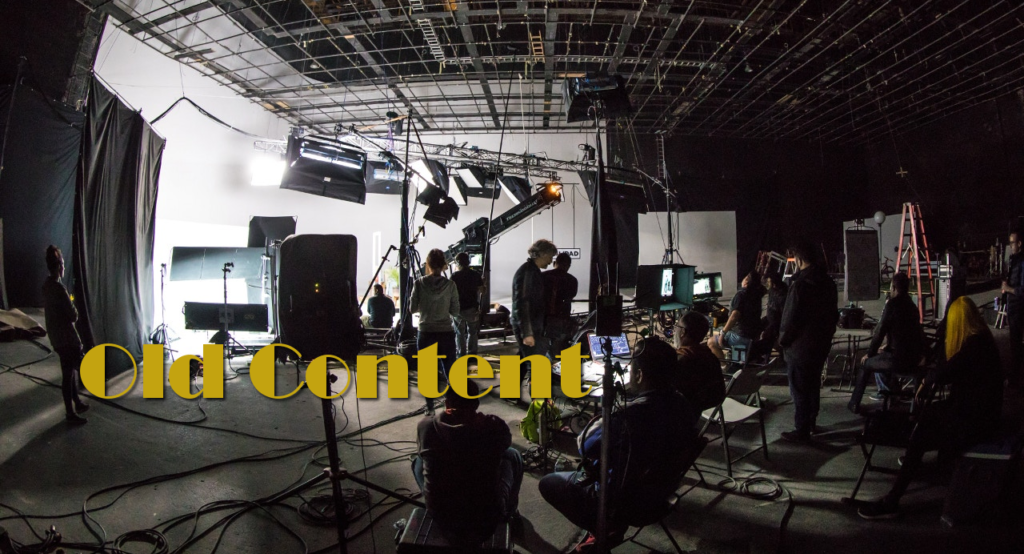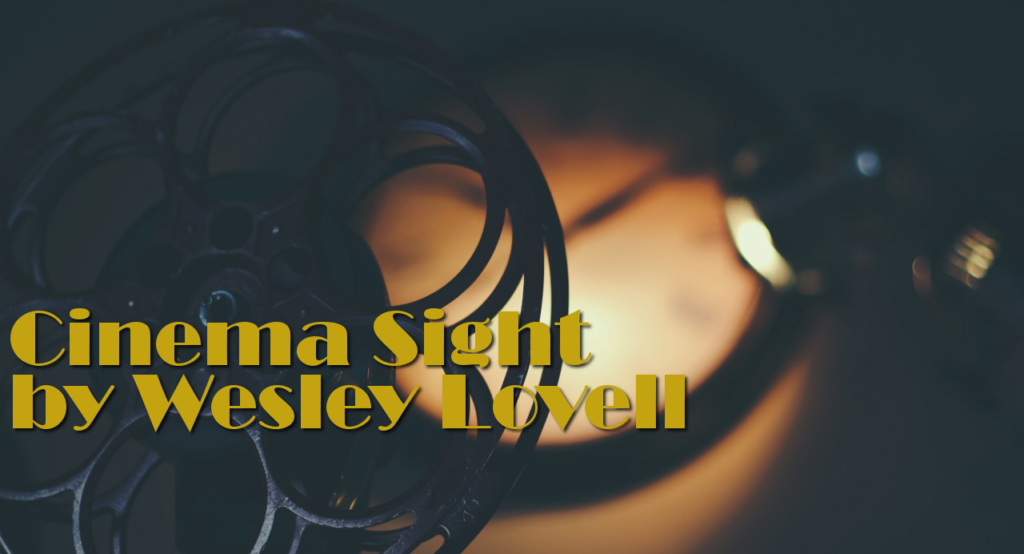
2022 Oscar-Nominated Short Films
These short films are available in a program from Shorts.TV, releasing theatrically.
Director
Peter Baynton, Charlie Mackesy (The Boy, the Mole…); Amanda Forbis, Wendy Tilby (Flying Sailor); João Gonzalez (Ice Merchants); Sara Gunnarsdóttir (My Year of Dicks); Lachlan Pendragon (An Ostrich Told Me…); Tom Berkeley, Ross White (Irish Goodbye); Anders Walter, Pipaluk K. Jørgensen (Ivalu); Eirik Tveiten (Night Ride); Alice Rohrwacher (Pupille); Cyrus Neshvad (Red Suitcase); Kartiki Gonsalves (Elephant Whisperers); Maxim Arbugaev, Evgenia Arbugaeva (Haulout); Jay Rosenblatt (How Do You Measure a Year?); Anne Alvergue, Debra McClutchy (Martha Mitchell Effect); Joshua Seftel (Stranger at the Gate)
Screenplay
Charlie Mackesy, Jon Croker, Charlie Mackesy (The Boy, the Mole…); Amanda Forbis, Wendy Tilby (Flying Sailor); João Gonzalez (Ice Merchants); Pamela Ribon (My Year of Dicks); Lachlan Pendragon (An Ostrich Told Me…); Tom Berkeley, Ross White (Irish Goodbye); Morten Dürr, Anders Walter (Ivalu); Eirik Tveiten (Night Ride); Alice Rohrwacher, Carmela Covino (Pupille); Guillaume Levil, Cyrus Neshvad (Red Suitcase); Kartiki Gonsalves, Garima Pura Patiyaalvi (Elephant Whisperers); Maxim Arbugaev, Evgenia Arbugaeva (Haulout)
Length
32 min. (The Boy, the Mole…); 8 min. (Flying Sailor); 14 min. (Ice Merchants); 24 min. (My Year of Dicks); 11 min. (An Ostrich Told Me…); 23 min. (Irish Goodbye); 16 min. (Ivalu); 16 min. (Night Ride); 37 min. (Pupille); 18 min. (Red Suitcase); 41 min. (Elephant Whisperers); 25 min. (Haulout); 29 min. (How Do You Measure a Year?); 40 min. (Martha Mitchell Effect); 29 min. (Stranger at the Gate)
Starring
Jude Coward Nicoll, Tom Hollander, Idris Elba, Gabriel Byrne (The Boy, the Mole…); Brie Tilton, Jackson Kelly, Klarissa Hernandez, Chris Elsenbroek, Sterling Temple Howard, Micael Trejo, Sean Stack (My Year of Dicks); Lachlan Pendragon, John Cavanagh, Michael Richard, Jamie Trotter (An Ostrich Told Me…); Michelle Fairley, Paddy Jenkins, James Martin, Seamus O’Hara (Irish Goodbye); Mila Heilmann Kreutzmann, Angunnguaq Larsen, Nivi Larsen (Ivalu); Axel Barø Aasen, Runar Koteng Frønes, Sigrid Kandal Husjord, Ola Hoemsnes Sandum (Night Ride); Alba Rohrwacher, Greta Zuccheri Montanari, Carmen Pommella, Lady Maru, Melisssa Falasconi, Febe Sapia, Francesca Uccelli, Mila Buganè, Maria Renata Corelli, Olivia Ascari, Alma Palmas (Pupille); Nawelle Ewad, Sarkaw Gorany, Anne Klein, Céline Camara, Funk Jerome, Denis Jousselin, Oscar Martin (Red Suitcase); Maxim Chakilev (Haulout); Ella Rosenblatt (How Do You Measure a Year?); Martha Mitchell, Dwight Chapin, Connie CHung, Piper Dankworth, John Dean, Sally Quinn, Bob Woodward (Martha Mitchell Effect); Bibi Bahrami, Saber Bahrami, Zaki Bahrami, Kent Kurtz, Dana McKinney, Emily McKinney, Richard McKinney, Jomo Williams (Stranger at the Gate)
MPAA Rating
N/A
Reviews
Animated Short Films
The Boy, the Mole, the Fox and the Horse
![]()
![]()
![]()
![]()
With the animated shorts, the year-in, year-out quality of these productions stays consistently high. As such, while it’s great to appreciate the animation itself, the story underlying the animation is as essential if not more important than the medium itself. The Boy, the Mole, the Fox, and the Horse is a production that founds itself on a simple, yet positive message about loneliness and isolation. The story is about a young boy (Jude Coward Nicoll) who’s lost in a wintry environment searching for his home. Along the way, he meets the titular mole (Tom Hollander), fox (Idris Elba), and horse (Gabriel Byrne), each of whom understands the boy’s plight.
This short film can be taken literally, which is a necessity in the beginning. As it progresses, however, it’s the subtext that becomes visible and the subtlety of it being more than just about one’s physical state, but about the mental one as well. Although each creature exemplifies a slightly different aspect of the human psyche, they each have complex relationships with their selves and their environment, making the entire production a perfect metaphor. The animation is painterly, capturing the essence of 2D animation while adding the kinds of rich detail that would have been unthinkable when animation was in its infancy a century ago. The voice work is richly textured with each actor adding subtlety to their inflections and expressions, blending into the characters. While that’s expected from Hollander and Byrne, Elba’s voice is far more easily recognizable elsewhere, but is fittingly subdued in this production.
The Flying Sailor
![]()
![]()
![]()
![]()
Oscar nominees Wendy Tilby and Amanda Forbis return to the Oscar race with this short animated film based on a true event about a sailor who survives a massive explosion. The film opens with two ships sailing into a small bay and seemingly on a collision course with one another. One of them is stocked full of TNT. We’re briefly introduced to a happy-go-lucky sailor out for a walk and a smoke who’s caught up in the massive foreshadowed detonation.
What follows is a fantastical exploration of what one’s life flashing before them could entail and other metaphysical imagery meant to evoke a sense of awe and wonder. Yet, the production feels a little dull. The viewer isn’t let in on the purpose of the film itself until the credits. They are left wondering what the point of it all is until then. The viewer can still build a pretty firm understanding of what’s going on and its significance, but a lot of the decisions made when editing this together result in something not entirely appealing. The animation of the titular flying sailor isn’t that interesting, which the lesser gripe one can have about the film itself.
Ice Merchants
![]()
![]()
![]()
![]()
A father and son live high on the perpendicular side of a vast mountain range. Their house is precariously perched on that face, its only support the cables and pitons connecting the structure to the cliff face above. The father is teaching his son the basics of their work, namely the carving up of ice and the delivery of said ice to the populace below. Each day, their ritual includes chopping up some ice and then parachuting to the village below. Once it’s all done, they use a cantilever-like system to return to their home. While the father prepares for the day, the son swings out over the empty air below, which may give some viewers a touch of vertigo.
Part of evaluating an animated production is looking at the animation to see if it fits with the theme of the production and while Ice Merchants does that somewhat well, it’s an art style that won’t appeal to a lot of viewers. Consisting of elongated forms and simple line work, Ice Merchants limits itself to a narrow color palette, which works surprisingly well in the long run. While the finale stretches credulity and you have to be avidly paying attention to minute details throughout, the narrative itself is uncomplicated. It’s a short that will broadly appeal to few, but will narrowly attract an audience that will be enamored with its simplicity.
My Year of Dicks
![]()
![]()
![]()
![]()
The second longest of this year’s animated shorts, My Year of Dicks follows a teenage girl’s monologue as she narrates five distinct chapters of her year trying to lose her virginity. The title may catch your attention, but the content will more than keep you interested. Sara Gunnarsdóttir directs this forthright exploration of teenage sexuality, giving the audience an insight into the struggles of young women as they try to navigate a dangerous world of men looking for their next conquest. She meets guys who are just wanting a quick bang, some who don’t want to have sex with virgins, and other figures of teenage angst. Brie Tilton effectively gives voice to our protagonist Pam as she envisions various scenarios going into each of the four chapters only to realize that her fantasies and her realities are failing to come together.
Based on her own memoir, screenwriter Pamela Ribon gives audiences a rarely seen look into the thought processes of young women wanting to experience sex for the first time, but building their desired experiences on social norms that are, for better or worse, deeply ingrained in our culture. While there is a unifying art style for much of the film, each segment is given over partly to a different style to embellish and accentuate the young woman’s journey. While all of the styles are rough and glitchy, they pair well with the subject matter at hand. While there aren’t a lot of new universal truths uncovered, it’s an affecting production that will entertain women of all ages, though its ribald frankness might turn away older viewers, who probably already blanched and turned away upon seeing the title.
An Ostrich Told Me the World Is Fake and I Think I Believe It
![]()
![]()
![]()
![]()
The only stop-motion effort among this year’s animated shorts, An Ostrich Told Me… is a fanciful tale about a frustrated office worker (Lachlan Pendragon) trying to sell frivolous devices to disinterested callers. As his day progresses as usual, strange occurrences make him question his reality. His boss’ (Michael Richard) jaw comes loose and falls to the floor, a coworker (Jamie Trotter) sits busily talking on the phone with no legs. As he works into the evening, amazed at the strange happenings around him, an ostrich (John Cavanagh) arrives to tell him that the world is fake and all of the pieces that have come before begin to click for the frustrated man.
It’s not an unheard of concept where an animated character becomes self-aware, but seldom has it been done with such inventiveness. Pendragon blends a bit of Being John Malkovich into his office-set surrealist environment, making the audience instantly aware something abnormal is going on. Yet, even though we’re immediately set apart from the action by the framing device of the studio wherein the animation is being moved bit by bit for filmic capture, we’re fully pulled into this sensational world of absurd situations coming to fruition for a confused and overburdened employee. While we’ve seen this type of scenario before, An Ostrich Told Me… feels fresh and creative. It adds in a bit of subtext about the absurdity of our daily lives and cubicle-sequestered existences, which helps pull the audience even further into this delightful short.
Live Action Short Films
An Irish Goodbye
![]()
![]()
![]()
![]()
A man (Seamus O’Hara) and his younger brother (James Martin) who has Down Syndrome come together over their mother’s death. The younger had lived with their mother while the elder has gone off to the big city. When the priest (Paddy Jenkins) reveals their mother left a list of things she’d like to do in her pocket, the younger brother uses the bucket list as an impetus to carry out her wishes along with her urn of ashes while reuniting him with his estranged older brother and hopefully staving off the sale of their farm.
This bittersweet story is the least complicated of the five nominees, but it has an endearing earnestness that makes up for that. Funerals are frequently used as uniting elements for film stories and this is no different than a lot of those. That’s perhaps why its familiarity makes some of its elements obvious. That said, directors Tom Berkeley and Ross White guide the film simply for the audience, generating sweetness and familial spirit that also makes the short warm and inviting. An Irish Goodbye proves that simple stories told well don’t need to be entirely original to be affecting.
Ivalu
![]()
![]()
![]()
![]()
In Ivalu, it’s what’s not said that carries the weight of the short. Set after the disappearance of her sister Ivalu (Nivi Larsen), Pipaluk (Mila Heilmann Kreutzmann) looks back over recent events to see if there are any clues to where she might have gone. She embarks on an introspective and physical journey to search for her dear sister ahead of her own impending confirmation ceremony. The film takes its time to unfold and that’s part of its simple, but evocative storytelling.
Directors Anders Walter and Pipaluk K. Jørgensen look back at the tiny details we often notice in hindsight that were always there. Things said. Things remembered. Things lost. It all plays into the fascinating narrative, which twists in the end to tell us more about the story than we ever suspected, but it does so subtly. There are no grand soliloquys, just a compelling story unfolding organically, slowly informing the audience of not only what happened, but who was responsible and the bittersweet finale plays against expectations. I would probably rank this as my second favorite of the live action short films.
Night Ride
![]()
![]()
![]()
![]()
Although the denouement to Night Ride is wonderful, the short feels like it was overengineered to reach that point. The film starts with Ebba (Sigrid Kandal Husjord) waiting for the tram to take her home after a party and being forced to wait outside while the conductor goes to the bathroom. Rather than stand in the freezing cold, the woman gets in, takes a seat at the steering wheel and begins to drive it herself, even though it’s clear that she doesn’t speak the language written on the panels.
When she’s forced to stop to pick up other folks, a toxic passenger (Axel Barø Aasen) gets aggressive with a young woman (Ola Hoemsnes Sandum) when he discovers that she’s not the person he thought she was. Throughout the piece, Ebba doesn’t want to be involved in things that are going on around her, but when she takes courageous leaps, she becomes an unknown benefactor. The film is told economically and there’s nothing subtle or inventive about where the story ultimately goes, but there’s a simple statement about love being love that resonates in the final scene even when it’s not certain that’s the direction things will ultimately go.
Le Pupille
![]()
![]()
![]()
![]()
It’s difficult to fault a short film that has a lot of inventiveness to it. Le Pupille is one such effort. It’s about a convent-run orphanage in World War II Italy wherein a bunch of young girls are preparing for a Christmas nativity scene where local parishioners can come and ask the orphans to bless their varied and sundry desires, from the return of loved ones at war to the return of lovers at home. Through these acts of charity, the girls are supposed to learn valuable lessons about desire, penitence, and selflessness.
The film plays interesting games with its material from introducing musical interludes, animated drawings of a clock, and other minute details that move this from the realm of reality to the realm of fantasy. Yet it’s precisely because of these flourishes that the film’s incredibly thin plot works as well as it does. Without these affectations, the production is pretty dreary and the lack of moral to the story weighs heavily on its final third where things only slightly change. One girl (Melissa Falasconi) learns that despite her best intentions and best efforts, nothing she does will be considered good enough in the eyes of a religious and fascist society, which is coincidentally condoned and enforced by the Catholic Church. It’s also possible to read too much into that and that it’s really just a dull story that doesn’t go anywhere very interesting.
The Red Suitcase
![]()
![]()
![]()
![]()
The best and most quietly powerful of the five live action shorts is this film about an Iranian teenager (Nawelle Ewad) who’s arrived in Luxembourg where she’s about to meet her soon-to-be-husband. As the short plays out, we discover that it is all an arranged marriage and the young woman is frightened of the prospects. However, it’s the fear of striking out on her own that she needs to overcome for it’s surely a choice between indentured servitude as a wife or the freedom to define herself on her own terms in a country where such pursuits are possible.
Nothing is spoon-fed to the audience. Ewad conveys the young woman’s trepidation and concern. Not only does she not speak any of the languages in use in this new country, but she must try to find a way out of her troubled situation. Her encounters with airport customs agents, exchanging currency from the large amount of rials she’s been given by her hopeful father to the small number of francs she receives, or overhearing her betrothed’s calm, but pointed conversation with her father. It’s all framed honestly and with the minimal of linguistic queues, but it’s handled so elegantly and beautifully that every frame brings us to the conclusion that we feel is most deserved where she must decide if she must give up all that defines her and her world in exchange for making her own choices and decisions. It’s a potent short film and easily the best of this lot.
Documentary Short Subjects
The Elephant Whisperers
![]()
![]()
![]()
![]()
Documentary short subjects help those of us who have attention issues watching factual features, enabling us to explore the world in small batches. It’s one of the reasons why the Oscars’ documentary short subjects are the only documentaries I typically watch. For the first of the five nominees this year, documentarian Kartiki Gonsalves follows the lives of Bomman and Bellie who live in a remote part of South India where they habitate in a community that cares for abandoned or endangered Asian elephants. Bomman has been restricted to caring for younger ones due to an incident with a bull that left him severely injured. He gratefully takes on the care of Raghu, a frightened pachyderm who must learn all the things his missing family could not teach him.
The audience is also introduced to the woman, Bellie, who helps take care of Raghu, a woman who is considering marriage to her fellow elephant tender. Their journey with Raghu is covered in detail, but also briefly as we’re relatively quickly introduced to a second orphaned elephant. The whole short explores the nature of family and unconditional love, humanizing elephants in a warm and gentle way. The document is simply told, has a definite narrative arc, and gets in and out of these people’s lives quickly enough not to wear out its welcome. Although there are moments that drag a bit, the genuine admiration these humans have for their charges shines through. While it could have done more to highlight the plight of elephants in that region of the world, especially the ecological impact of global warming, it makes an oblique enough reference to be impactful.
Haulout
![]()
![]()
![]()
![]()
You wouldn’t expect a film shot in the harsh winter of Siberia, drowned in grays and haze, would be one of the most visually stunning documentary shorts on offer. The document follows Maxim Chakilev, a marine biologist who’s come to the frozen tundra to document an annual migratory event of walruses in that region. We’re brought in as the bleak landscape gives way to Chakilev’s bundled form, making his way trough the desolate landscape to the small wooden cabin that will be his home for several days as he waits for the arrival of a huge herd of walruses to dominate the shoreline and its immediate environs.
There is little dialogue in the short , filmmakers Maxim Arbugaev and Evgenia Arbugaeva do a tremendous job letting the events play out for the audience and providing only enough visual detail to easily explain the situation. It’s a potent short film that tackles climate change in a unique way and does so with some of the most beautiful photography I’ve ever seen in this category. It’s a gorgeous landscape despite its cold isolation, which itself acts as a metaphor for the dire situation these creatures find themselves in. There’s even a powerfully emotional scene in the final act that will leave the viewer gutted. It’s in that moment that we’ve been drawn towards that the film’s creative excellence comes to full bore. There have been countless emotional efforts in this category over the years, but I’ve never been quite as awed by a documentary as I was by this one.
How Do You Measure a Year?
![]()
![]()
![]()
![]()
Comprised entirely of archival footage, filmmaker Jay Rosenblatt documents his daughter’s changing life over the course of 16 years from the ages of 2 to 18. The audience is advised early on that he asked his daughter the same questions on each of her birthdays and documented them for the viewer. The short’s editing doesn’t do a lot of back-and-forth movement except in the early frames, which establishes the premise of the short film succinctly, but confusingly. The sound quality isn’t good, even with his daughter miked, so it’s difficult to hear her words sometimes and with her early age it’s even more of a challenge.
Ultimately, the documentary finds a way to capture the essence of young girl growing up. It explores the phases they go through going from the precocious to the vibrant to the guarded. The audience isn’t asked to make these judgments and the purpose of the film relies entirely on the viewer’s own observational skills. In the end, it doesn’t add up to very much except as a visual document of life and the change time makes to all of us. Like with Rosenblatt’s Oscar-nominated short last year, the slightly better When We Were Bullies, his focus seems to be more on the novelty of it all rather than the observational element. It’s like the film Boyhood without the excitement, eventfulness, and meaning. While it’s always nice to see a documentarian avoiding some measure of editorializing, putting absolutely none in is just as frustrating.
The Martha Mitchell Effect
![]()
![]()
![]()
![]()
For those unfamiliar with Martha Mitchell, even after the recent Julia Roberts-led TV movie Gaslit, this short runs down her rise to prominence and explores her life from an outsider’s perspective, fully aware of who she was and what she did, but desiring others to hear of the treatment she received at the hands of those she once championed. Martha was the wife of John Mitchell, Richard M. Nixon’s Attorney General during his first term in office, and architect of the Watergate break-in that ultimately led to Nixon’s downfall. She was an outspoken woman who became the most famous Cabinet wife in American history. It was her verbose and prolific communication with the public that ultimately put her on the enemies list of the Nixon White House in his second term.
Mitchell’s exuberance and vibrancy made her personality infectious. She was a gossip-maven’s best friend and she was sometimes a bit too frank about the government and its role in people’s lives, but the document explains all of that in detail. It’s a fascinating exploration of her rise to fame as well as the gaslighting that Nixon and his cronies used to push her out of the spotlight and insist she had gone crazy. It’s a side to the Watergate affair that a lot of people are less familiar with since very few films included Mitchell as a component. What this documentary does well is present that information to the audience and allow them to come to the same conclusion millions of others did: Martha Mitchell was right.
Stranger at the Gate
![]()
![]()
![]()
![]()
For the last of the documentary short subjects for this year, we have an interesting documentary that leads the viewer to believe it’s headed in one direction and then does a 180 and explore something else entirely. The film explores the radicalization of a U.S. Marine (Richard McKinney) and his plot to blow up a Muslim center in Muncie, Indiana. Filmmaker Joshua Seftel speaks to McKinney, his wife and daughter, and a handful of his potential victims. It explores not just how easy it is to turn well meaning Americans into anti-Muslim zealots, but how important it is to meet such extremism with love and understanding.
While the documentary feels like a traditional one, comprised almost entirely of one-on-one interviews interspersed with archival and live-filmed material, it’s how Seftel breaks down the events of the film that make it so potent. The opening scenes lead the viewer to believe it’s heading in one expected direction, but Seftel deftly shifts the focus throughout the first half to divert the audience into another direction entirely. It’s a familiar, but well executed maneuver and it adds surprising weight to the material, allowing the audience to not only empathize with the potential victims, but to understand where McKinney’s hate and zealotry could lead. It’s the kind of documentary that might initially appeal to liberal audiences, but it’s crucial that conservative ones give it a watch as well, if only to hopefully change a few minds among the radicalized right of American politics.
Review Written
February 8, 2023


















Leave a Reply